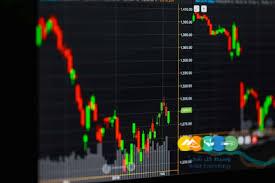
What is Forex Trading?
Forex trading, short for foreign exchange trading, is the process of exchanging one currency for another in the global financial market. It operates around the clock and is the largest financial market in the world, with a daily trading volume exceeding $6 trillion. Forex trading is highly liquid, meaning that it is easy to buy or sell currencies without causing significant price changes. Traders engage in forex transactions for various reasons, including speculation on price movements, hedging against currency fluctuations, or conducting international business. what is forex trading https://acev.io/
The Mechanics of Forex Trading
At its core, Forex trading involves the simultaneous buying of one currency and selling of another. Currencies are traded in pairs, like EUR/USD (Euro to US Dollar) or USD/JPY (US Dollar to Japanese Yen). The value of a currency pair changes based on various factors, including economic indicators, political events, and market sentiment.
Transactions are facilitated through online trading platforms, which connect traders to the interbank market. These platforms provide the necessary tools and resources for traders to execute their strategies, analyze market trends, and manage their trading accounts.
Participants in the Forex Market
The Forex market consists of various participants, including:
- Central Banks: They influence currency prices through monetary policy, interest rate adjustments, and foreign exchange intervention.
- Commercial Banks: Acting as market makers, they facilitate currency exchange for clients and engage in proprietary trading.
- Corporations: Businesses that conduct international trade often engage in Forex transactions to hedge against currency risk.
- Retail Traders: Individual traders who speculate on currency movements, using online trading platforms to access the market.
- Investment Funds: Hedge funds and mutual funds often trade currencies as part of their investment strategies.
Types of Forex Trading Strategies
Forex trading strategies can be broadly categorized into three types:
- Scalping: This strategy involves making quick trades over short time frames, capitalizing on small price fluctuations.
- Day Trading: Day traders open and close positions within the same trading day, aiming to profit from intraday market movements.
- Swing Trading: Swing traders hold positions for several days or weeks, taking advantage of medium-term price trends.
Each strategy comes with its own set of risks and rewards, and traders must choose one that aligns with their risk tolerance and market outlook.
The Importance of Analysis in Forex Trading

Successful Forex trading relies heavily on analysis. Traders employ two main types of analysis:
- Fundamental Analysis: This approach focuses on economic indicators, such as interest rates, inflation, and employment data, to evaluate the overall health of an economy and predict currency movements.
- Technical Analysis: This method involves analyzing price charts and using indicators to identify potential entry and exit points based on historical price patterns.
Many traders combine both analyses to enhance their trading decisions and improve their chances of success.
Risks Involved in Forex Trading
While Forex trading offers unique opportunities for profit, it also entails considerable risks. Some common risks include:
- Market Risk: This is the risk of losing money due to adverse price movements in currency pairs.
- Leverage Risk: While leverage can amplify profits, it can also magnify losses, making it essential for traders to manage their leverage wisely.
- Liquidity Risk: In times of market volatility, obtaining favorable prices for currency pairs may become challenging.
- Interest Rate Risk: Changes in interest rates can affect currency values, impacting the profitability of trades.
Traders mitigate risks by employing effective risk management strategies, such as setting stop-loss orders and diversifying their trading portfolios.
How to Get Started in Forex Trading
If you are interested in entering the world of Forex trading, here are some steps to consider:
- Educate Yourself: Start by learning the fundamentals of Forex trading, including how the market operates, trading strategies, and risk management techniques.
- Choose a Reliable Broker: Research and select a reputable Forex broker that offers competitive spreads, reliable execution, and a user-friendly trading platform.
- Open a Trading Account: Open a demo account to practice trading with virtual funds before committing real money. This will help you understand how to use the trading platform and develop your trading skills.
- Develop a Trading Plan: Create a comprehensive trading plan that outlines your trading goals, risk tolerance, and strategies you will employ.
- Start Trading: Once you feel confident, begin trading with real money, keeping a close eye on market conditions and adhering to your trading plan.
Forex trading can be a rewarding yet challenging endeavor, and continuous learning and practice are essential for success.
Conclusion
In conclusion, Forex trading is a complex but fascinating market that offers various opportunities for traders. By understanding the mechanics, strategies, and risks associated with Forex trading, traders can navigate this dynamic environment more effectively. As with any financial venture, it’s crucial to stay informed, continuously educate yourself, and apply sound trading practices to increase your chances of success in the Forex market.

اترك تعليقا حول هذا الموضوع
You must be logged in to post a review.